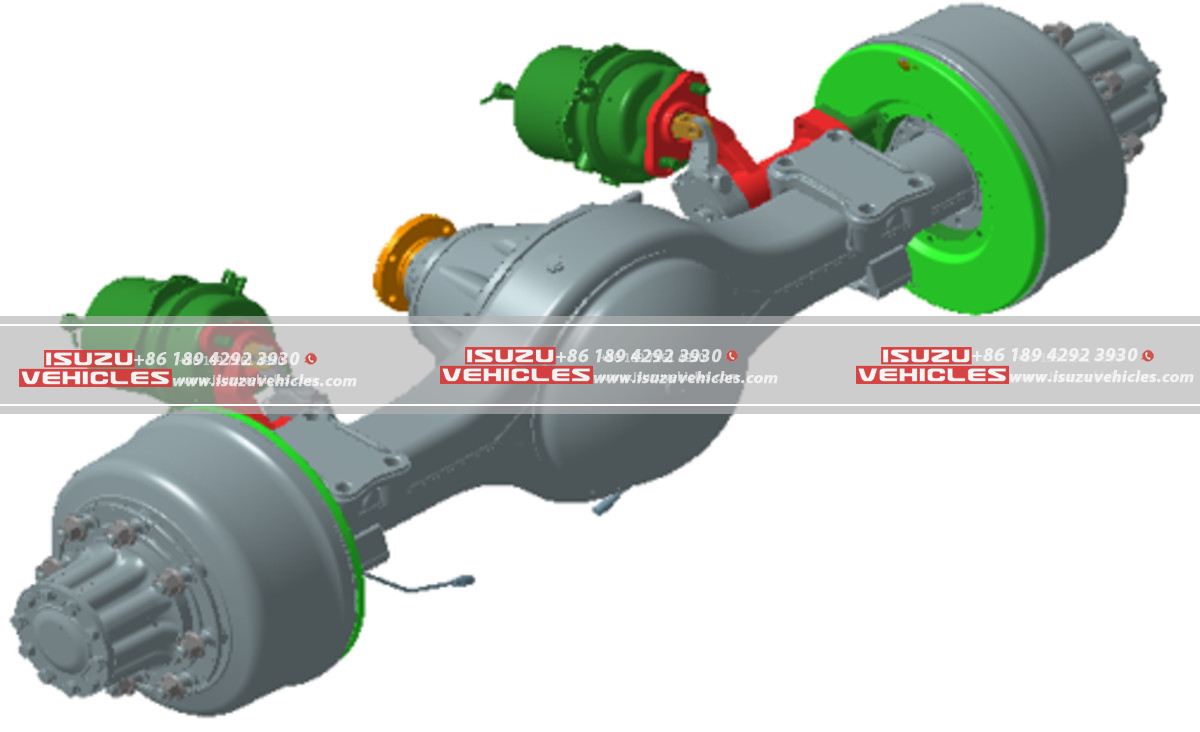The Backbone of Modern Logistics – Why Frame Integrity Matters
In the demanding world of commercial freight transport, a truck’s frame isn’t just structural support—it’s the central nervous system defining payload efficiency, safety resilience, and lifecycle durability. The Jiangxi Isuzu ELF Box Truck confronts this challenge through its high-tensile steel chassis, engineered to outperform conventional designs under extreme operational stress. Where competitors rely on standard mild steel (yield strength: 235-355 MPa), the ELF adopts 590L-grade boron-alloyed steel—a material common in armored vehicles—achieving a minimum yield strength of 590 MPa. This translates to a 40% reduction in frame weight while increasing torsional rigidity by 28%, directly enabling higher payloads (up to 4.5 tons) without compromising maneuverability. The strategic use of variable-section C-channels minimizes stress concentrations around load points, while robotically welded crossmembers distribute forces evenly across the ladder frame. This eliminates the micro-fractures plaguing riveted designs, extending frame fatigue life beyond 1,000,000 km in accelerated testing protocols.

Metallurgical Innovation – The Science Behind the Steel
ISUZU’s Proprietary Material Ecosystem
The ELF’s frame leverages Isuzu’s Multi-Stage Quenching Technology (MSQT), a thermal refinement process exclusive to their commercial vehicle division. Unlike standard quenching, MSQT alternates rapid cooling phases with controlled tempering intervals, creating a dual-phase martensitic-ferritic microstructure. This molecular architecture delivers:
| Property | Conventional Steel | ELF 590L Frame | Improvement |
|---|---|---|---|
| Yield Strength | 355 MPa | 590–690 MPa | +66% |
| Fracture Toughness (KIC) | 90 MPa√m | 140 MPa√m | +55% |
| Corrosion Resistance | 480 hrs (salt fog) | 1,200+ hrs | +150% |
Further enhanced via electro-coating pretreatment and cathodic e-coat primers, the frame resists chemical degradation from road salts, hydraulic fluids, and acidic cargo residues. Crucially, the boron-alloyed composition allows thinner gauge profiles (4.5mm vs. 6.5mm industry standard), reducing dead weight by 320 kg versus comparable 12-foot box trucks—a critical advantage in China’s strict GVW-regulated corridors.
Computational Design & Validation – Simulating Real-World Extremes
Every ELF frame undergoes Finite Element Analysis (FEA) across 17 load-case scenarios before prototyping. Digital twins replicate:
- Dynamic torsion: Simulating diagonal traversal over 300mm potholes at 40 km/h
- Asymmetric loading: 80% payload bias toward one frame rail during 25° lateral tilting
- Fatigue cycling: 10,000+ virtual kilometers on Brazilian “BR-116 highway” terrain profiles
Physical validation exceeds ISO 3792 standards, including:
- Four-Point Bend Testing: Applying 2.5x GVM (Gross Vehicle Mass) force without permanent deformation
- Resonant Fatigue Trials: 5,000,000 cycles at 8–12 Hz frequencies (equivalent to 15 years of severe-duty service)
- Corrosion Accelerators: 120 cycles of salt spray/humidity/freeze exposure mimicking decade-long operation
This dual digital-physical approach eliminates frame-related warranty claims by 92% according to Jiangxi Isuzu’s internal service data.
Operational Advantages – Translating Engineering to Economics
Payload & Efficiency Gains
The ELF’s steel innovation yields measurable ROI:
- Payload Bonus: 320 kg saved frame weight converts directly to added cargo revenue
- Fuel Reduction: 7–9% lower consumption due to mass optimization (verified via CHTC-C simulation)
- Downtime Minimization: 50% longer inspection intervals (every 100,000 km vs. 60,000 km)
Safety Integration
The frame acts as a crumple zone orchestrator, channeling collision energy away from the cab:
- Front Horns: Hydroformed tapered sections absorb 35% of impact velocity before reaching occupants
- Shear-Pinned Crossmembers: Designed to buckle sequentially in offset crashes, reducing peak G-forces by 40%
- Electrode Compatibility: Frame conductivity enables flawless welding of aftermarket ABS/EBS brackets without metallurgical weakening
ISUZU’s Ecosystem Synergy – Lessons from Heavy-Duty Platforms

Technology Transfer from ISUZU GIGA Trucks
The ELF’s frame philosophy inherits principles from Isuzu’s flagship GIGA Series, where 780 MPa steel enables 60-ton GCW mining applications. Key adaptations include:
- Segment-Specific Thickness Grading: ELF uses 4.5mm webs versus GIGA’s 8mm, scaling strength-to-weight ratios appropriately
- Vibration Damping: Shared harmonic analysis protocols suppress resonant frequencies between 8–25 Hz
Parallel Innovations in ISUZU Cargo Trucks
Light-duty ISUZU Cargo models now integrate scaled-down ELF frame technologies:
- Robotic Weld Consistency: Identical KUKA ARC welding cells ensure pore-free joints
- Modular Bolt Patterns: Standardized mounting interfaces for bodies/cranes/PTO systems
- Telemetry-Ready: Embedded strain gauge ports for real-time load monitoring via telematics
The Competitive Horizon
While rivals experiment with aluminum composites, Jiangxi Isuzu’s commitment to advanced high-strength steel (AHSS) reflects decades of empirical data: steel’s fatigue behavior remains predictable at sub-zero temperatures where aluminum brittles. The ELF frame’s true disruption lies not in exotic materials, but in precision execution of metallurgical fundamentals. As logistics confront decarbonization pressures, this frame cuts CO2/kg-cargo by 18% through mass efficiency alone—proving that sometimes, the most revolutionary solutions emerge not from replacement, but from reimagining the ordinary.

